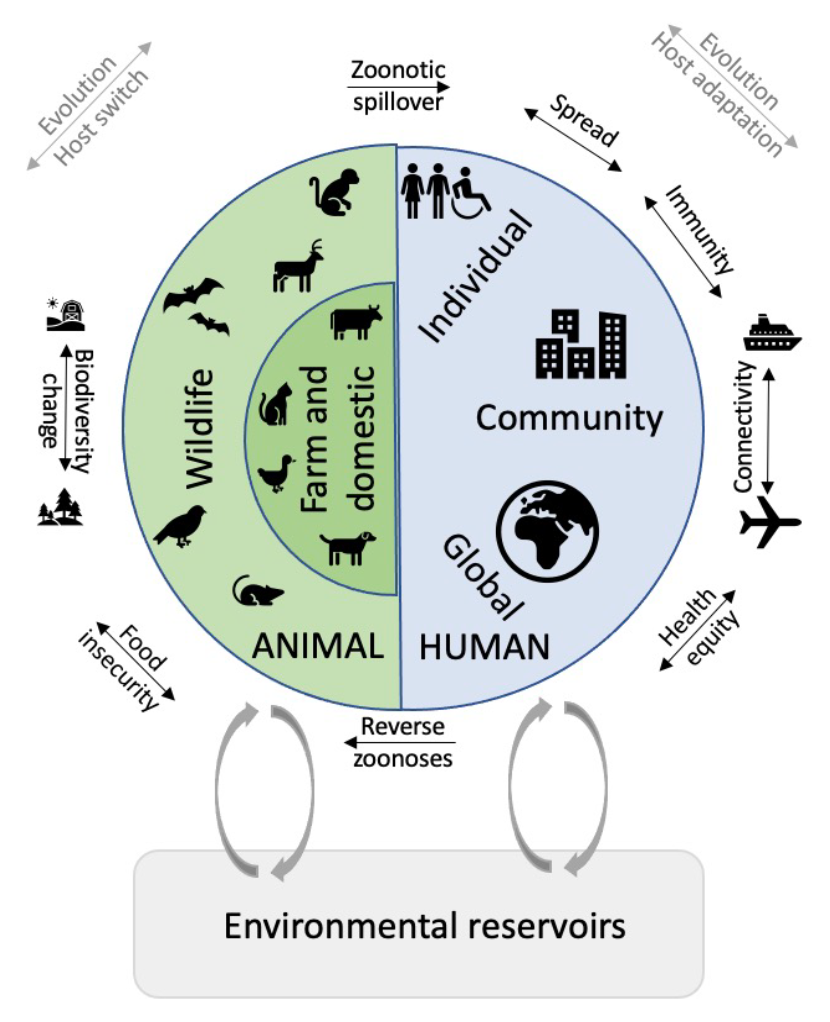d) Models can integrate disease dynamics across multiple domains
Models can integrate disease dynamics across multiple domains (Figure 1). This includes describing immunological and epidemiological processes driving how a disease spreads and evolves, coupling disease dynamics across human-animal-environment domains via a One Health approach (One Health Modelling Network).
- It also includes connecting human disease and public health policy to their impacts on economics, education, and the environment to understand the broader set of costs and benefits associated with our responses to pandemics (Bernstein et al. 2022). Such multidisciplinary integration provided by the models can reveal the socio-economic realities in adherence to public health measures and the need to take these into consideration in the formulation of policy (Brankston et al. 2021, Murty et al. 2021).

Figure 1. Emerging infectious disease models provide methods for assimilating multiple sources of information across multiple domains simultaneously.